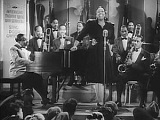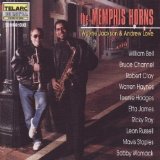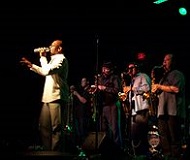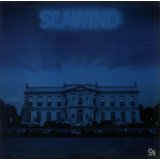High Fives 2014 – John Isley
Our next contributor plays saxophone with Southside Johnny and The Asbury Jukes but also released a strikingly good album this year as part of the New York Horns which is one of Allan’s albums of the year. When we asked him for a High Fives piece, here’s what he came up with. We think you’ll like this.
5 Horn Sections That Changed My Life
As a saxophone player, one of my absolute favorite ways to make music is with other horn players. Give me a trumpet or two, a couple of other saxophone players and a trombone to add some love, and you’ve got a recipe for a whole lotta fun. If the rhythm section is the meat and potatoes, and the vocalist is dessert, then the horn section is the salt. We bring out all the other flavors and make everything oh so much sweeter.
In thinking about the subject matter for this best-of list, it quickly dawned on me that I had MANY more than five examples that I could draw upon to make my point. So many that I almost gave up! After some careful consideration though, here’s five of the horn sections that have changed my life through their contributions to the music:
THE swingin-est band in the history of jazz. Count Basie’s band emerged in the 1930’s in Kansas City, and became the de facto definition of foot-stomping swing with their penchant for shouting blues, riffing head arrangements, and an infectious groove that just made you want to dance. The jazz traditions of “riffing” and “head arrangements”, while not originating with the Basie band, were certainly developed and forwarded onward by the band. Many of the riffs, licks and phrases that you will hear modern horn sections play can trace some or part of their lineage back to the Basie band. Check out “The Atomic Mr. Basie” (1957) and “Count Basie Swings, Joe Williams Sings” (1956). Two of my all time favorite Basie albums.
James Brown redefined popular music. He also redefined the role of the horn section in popular music. Prior to his influence, horns would generally have a more melodic role – playing melodies and generally being in a “lead” role. The late swing and early jump blues bands often were led by horn players and under the vocals the horns played a large supporting role, remaining a mostly harmonic underpinning. James changed all that. The horn section under James Brown became another rhythmic instrument, driving and propelling the groove. With snapping rhythmic pulses and repeating motifs, the horn section was another texture in the rhythm section, adding propulsion and rhythmic intensity. Check out “Mother Popcorn”, “Super Bad”, “Soul Power” and “Cold Sweat” for classic examples. The JB Horns (Maceo Parker, Fred Wesley, Alfred “Pee Wee” Ellis) also were a fixture of P-Funk and Bootsie’s (Collins) Rubber Band, as the Horny Horns.
Growing up in North Carolina, in the southern United States, it was inevitable that I was exposed to the music coming out of Memphis, Tennessee and especially STAX Records. Wayne Jackson and Andrew Love, aka the Memphis Horns, are one of the most recorded horn sections in history. If you’ve heard “Dock Of The Bay”, “Soul Man”, “Hold On I’m Comin’”, “Suspicious Minds”, “Sweet Caroline”, “Takin’ It To The Streets”, “Let’s Stay Together”, “Born Under A Bad Sign”, “Knock On Wood” (and countless other hits), then you’ve heard the Memphis Horns. They appeared on virtually every STAX recording, backing Otis Redding, Sam & Dave, Eddie Floyd, Carla & Rufus Thomas and an endless list of others. Not only were they a staple of the Memphis scene but could also be found as part of the Muscle Shoals scene, and on recordings with Aretha Franklin and Wilson Pickett.
No modern horn player that plays funk, soul or R&B hasn’t heard of or spent time studying TOP. Bursting onto the scene in Oakland, CA in 1968, Tower saw its peak success from 1973 to 1974. The band continues to tour extensively to this day, playing hundreds of shows every year across the world. The horn section has been featured on countless recordings by artists as diverse as Little Feat, Graham Central Station, The Monkees, Santana, Elton John, John Lee Hooker, Rufus, Rod Stewart, Huey Lewis and the News, and Aerosmith and has come to define a punchy, modern and funky style of writing and performing for horns. Check out “Tower of Power” (1973) and “Back to Oakland” (1974) for the definitive TOP experience.
While not a horn section unto himself, Jerry Hey has probably written more horn arrangements for hit songs and albums than anyone else in the business. As part of the Seawind Horns, Jerry was brought to the attention of Quincy Jones. That relationship led to Jerry’s writing for some of the biggest names in the industry. His credits as an arranger include albums from Michael Jackson, Brothers Johnson, Donna Summer, Rufus, George Benson, Patti Austin, James Ingram, Frank Sinatra, Barbra Streisand, Earth, Wind and Fire , Al Jarreau, Chaka Khan, and the list goes on… Two of my favorite albums that feature Jerry’s writing (and the Jerry Hey Horns) extensively are Al Jarreau’s “Jarreau” and “High Crime” (Check out “Imagination”!) and likely my all time favorite Jerry Hey arrangement (and performance) is from Michael Jackson’s “Workin’ Day And Night” (“Off The Wall”).
I could go on and on… there are so many great horn sections, players and writers out there, making incredible music. Hopefully this list will give you some food for thought and a good place to begin to explore the horn section legacy. Enjoy!







